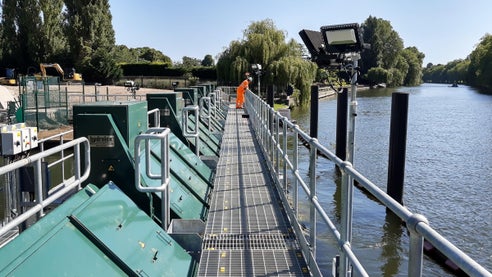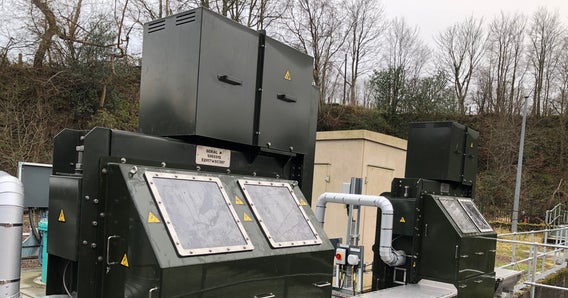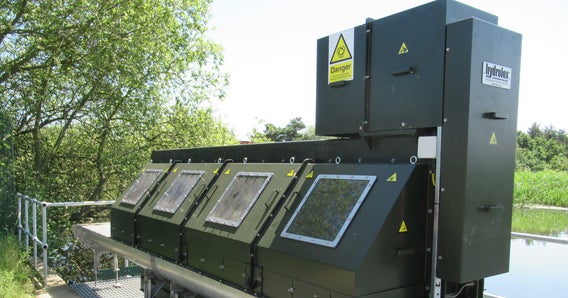Hydrolox Water Screens Ensure Eels Regulations Compliance for Thames Water
Case StudyThames Water
Location
London, UK
Industry
Municipal/Desalination Water
Solution
Fish Exclusion

Customer Objectives
Approximately 75% of London’s water supply depends on 10 intake locations on the River Thames and River Lee operated by Thames Water. For the largest intake, the Datchet site, Thames Water sought to replace the existing coarse bar screens to meet the requirements of the Eels (England and Wales) Regulations 2009.
In 2006–2007, Thames Water commissioned research (known as the UK Best Practice Fish Screening Trials Study) to compare and evaluate different types of intake screens. The study identified Hydrolox vertical traveling water screens as BTA (Best Technology Available) for being the best performing and entraining the smallest amount of fish with no impingement.
Hydrolox Execution
For Thames Water, it was critical to cause minimal disruption to water abstraction while replacing the screens. One day’s full abstraction via the Datchet Intake is almost enough to service a day of London’s water demand, and there’s little margin to limit abstraction without compromising long-term storage capacity.
We look to engage with companies that are able to offer a full solution and integrate with other parts of the supply chain. The Hydrolox team has proven to be a technically capable delivery partner for the full program of eel screen installations.
Amit Chakraborti
Eight2O Construction Site Manager
Working closely with the Eight2O consortium, the Hydrolox engineering team designed and built seven Series 1800 angled traveling water screens. The designed solution kept the screens as small as possible while ensuring water intake remained steady during replacement works.
Results
Since their installation in May 2020, Hydrolox water screens have prevented eels and other fish species from being entrained in the pumps, reduced the debris transferred to the reservoir, and met the Eels (England and Wales) Regulations 2009.
Hydrolox screens have also greatly improved debris handling efficiency. While other technologies deposit debris removed from the river on the ground, requiring it to be disposed of manually, Hydrolox screens eliminate the requirement to use transport to dispose of debris during the cleaning process.
Amit Chakraborti, Eight2O Construction Site Manager, and Karl Bousfield, Hydrolox Water Screen Account Manager, are very pleased with the results.
Working to deliver the best practice solutions has brought out the best of our engineering partnership with Eight2O. We look forward to working together in the future.
Karl Bousfield
Hydrolox Water Screen Account Manager



